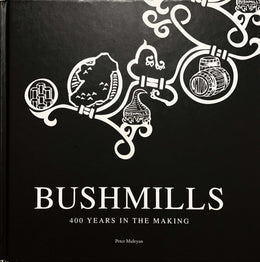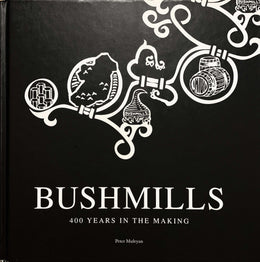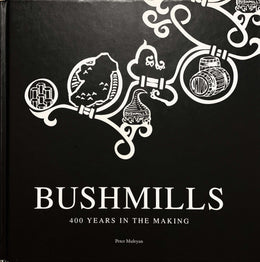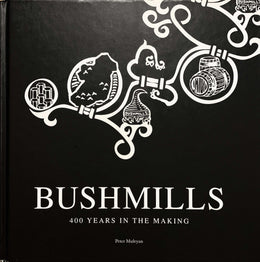In December 1962, the year he was awarded a knighthood, Time magazine ran a profile of the boss of Great Universal Stores, the sixty-five-year-old Sir Isaac Wolfson:
"Sir Isaac himself is a teetotaler and nonsmoker, who proudly insists that his personal expenses are covered by a shilling (14¢) a day. The Gov'nor', as employees call him, still arrives at his red- carpeted office every morning at 7.45 a.m., works through till 5 or 6p.m."
Nowadays GUS plc has two separate divisions, one includes Argos, the UK's largest catalogue retailer, the other is the Experian credit reporting agency. When Glasgow- born Wolfson joined GUS in 1932, Time magazine reported that the company "was a consistent money loser...Gussie's shares, now worth 450 times what they were when Sir Isaac joined the company."
Knowing how to make friends and influence people, throughout the war Wolfson had kept the 'hard to get hold of’ Bushmills on hand to impress his guests. So he must have been surprised when, shortly after the war, he found himself face to face with Wilson Boyd at a business lunch in Belfast. Legend has it that Wolfson came right out and asked if Boyd was willing to sell the distillery as a going concern. Boyd's answer isn't recorded, but almost immediately Wolfson started buying into the distillery. Although the Boyd Brothers stayed on as company directors, by 1946 GUS had acquired a controlling interest in both Old Bushmills and Coleraine distilleries.
Before his acquisition of Old Bushmills, Wolfson wasn't in the drinks trade, but he was very much in the business of buying, selling and making money. GUS had deep pockets, and although life in the distillery went on as it ever had, the future of Old Bushmills was being secured.
In the book Spirit of the Age: Story of Old Bushmills, the company chartered accountant Rollo McClure remembers the distillery at this period.


The distillery in the late 1960s.

1950s advertising for the American market
“[It was] a good solid business, though the turnover was not all that great. In the early days the sales were confined to Ireland and exports went mostly to England and North America. But under Wolfson they began to export all over the world. I was required to make a monthly analysis and exports were sent to practically anywhere you could name."
Up until this point the vast majority of the small Irish distilleries relied very heavily on local sales. Thanks to Wilson Boyd, Old Bushmills was available in foreign markets, but in reality the amounts were relatively small. By pushing Old Bushmills around the world, Wolfson was expanding its fan base, securing foreign markets and thereby cushioning the distillery from any more major shocks to the already shaky domestic market.
Throughout the 1950s and 1960s sales to the United States increased rapidly. The reputation of Old Bushmills grew and grew, thanks in no small part to Col. Henry Kaplan of Quality Importers. Kaplan was an energetic and incredibly focused businessman, who had served in the army (he retained his military title) and made fortunes many times over in various drink-based industries. He was a close personal friend of Isaac Wolfson, and after the Second World War Kaplan set up Quality Importers. He put his not inconsiderable energies into marketing Ambassador De Luxe Scotch and later Bushmills.
He was a brand ambassador extraordinaire. For thirty years he lived in a suite at the Waldorf Hotel and courted film stars, journalists, horse trainers —anyone who could help him sell his whiskey. One of his favourite haunts was the '21' club on New York's West 52nd St. In Capote's novella Breakfast at Tiffany's this is where the narrator first spots Holly Golightly.
In The Spirit of the Age Kaplan's long time associate Sol Aleles recalls a story which just about sums him up.
"He took it as a personal affront if any of his closefriends ordered anything other than Ambasador De Luxe or Old Bushmills...Henry was the greatest salesman I ever knew. One day we were flyingfrom the West Coast to New York but Henry announced suddenly, 'I'm stopping off at Omaha.' I asked in surprise, 'Whatever for?' and Henry said 'I don't think they are doing enough in Nebraska.' So we took yet another flight to Omaha, and we checked in at a local hotel. Henry asked them to give him flashlamps, and we went around the town in the darkness shining the lamps into the windows of liquor stores to check if Ambassador and Old Bushmills were on display. In no time at all the police picked us up and asked what the hell we were doing. We had to talk our way out of that one, but that's the kind of salesman Henry was!"
Kaplan and Wolfson's efforts were paying off. By the early 1970s Bushmills had become the largest selling Irish whiskey in the United States. But their success at this time should be kept in perspective. Back in the 1950s 'whiskey' meant `Scotch', and that meant blended whiskey. Scotch then and not Irish was the drink of choice on Madison Avenue. Ireland simply didn't have the brands, the expertise or the muscle to crack the American market. In 1955, only 140,458 gallons of whiskey in total were exported from the Republic of Ireland, up a paltry 12,683 gallons in twenty years. There wasn't a distillery on the island, north or south, whose whiskies were getting the kinds of sales enjoyed by Johnnie Walker or J&B. Irish distilleries were very small players in what was becoming a global industry, dominated by multi-nationals.


1960s advertising for the American market
Written by Peter Mulryan
The text is an excerpt from "Bushmills: 400 Years in the Making" (pp. 102 - 107), written by Peter Mulryan, published 2008 by Appletree Press Ltd.







